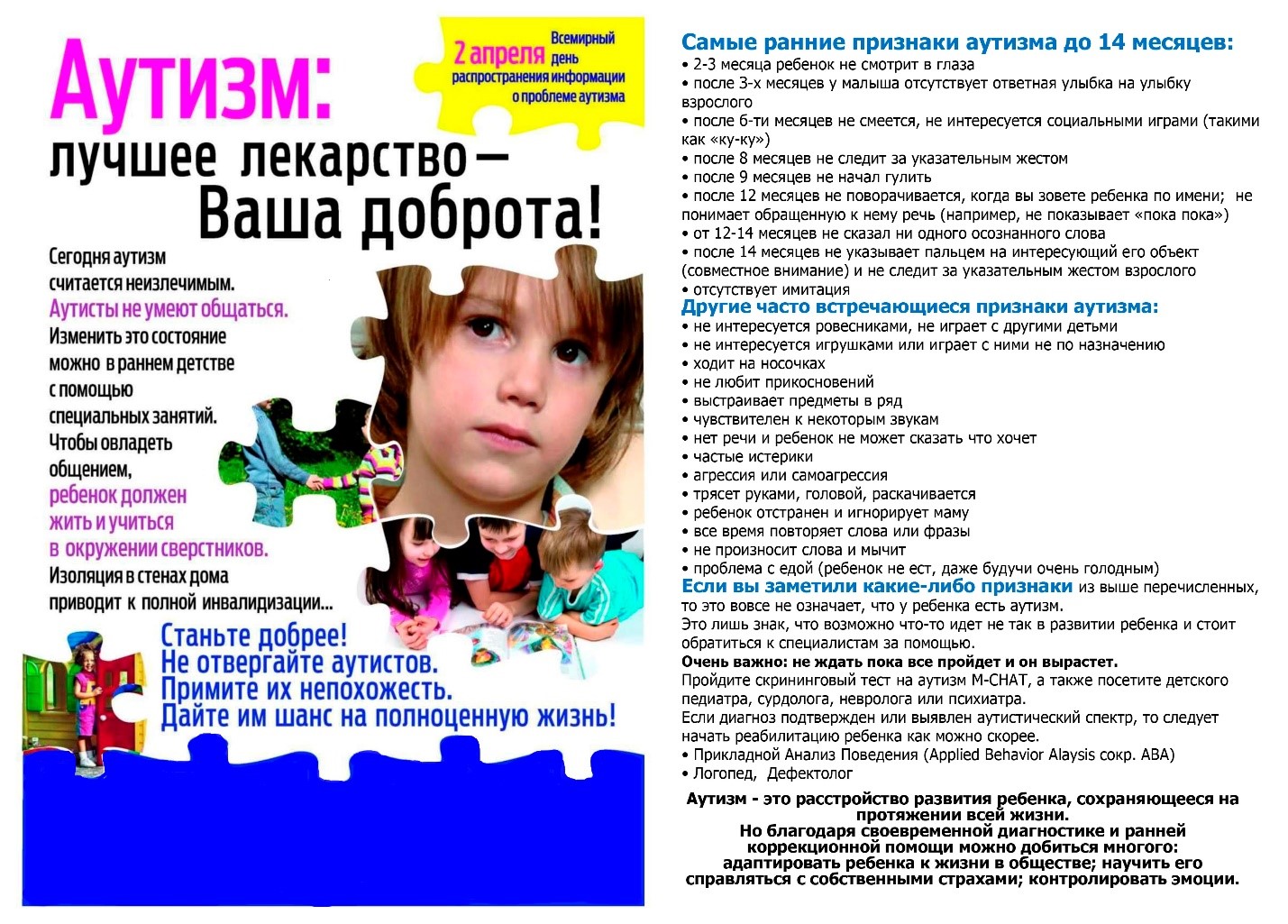"The Autism Epidemic." Is it a real problem or a data quirk?

In recent decades, autism spectrum disorders (ASD) have been diagnosed many times more often than before, which is why some activists, politicians and simply concerned people are talking about an epidemic. Others tell them that the growing figures are deceptive.
The term “autism” comes from a Greek word meaning “self” and was originally used to describe schizophrenic detachment. In a more or less modern sense, it was used by the emigrated to the United States Austrian psychiatrist Leo Kanner, who considered autism as a separate syndrome. These days, it is more common to talk about a group of disorders, autistic traits are considered as being on a spectrum.
There are three classic traits: problems with language, communication and imagination. People with autism may have difficulty mastering speech, understanding metaphors, and long sentences; support relationships and conversations, understand body language; correctly interpret your feelings, what is on another person’s mind, or even recognize all this; imagine the development of events, plan, improvise, adapt to what is happening. In autism, a tendency to engage in repetitive behaviors and high sensitivity to sounds, smells, and touch are common. Because of such a stimulus, a person can easily lose his temper.
In the most severe cases, people with autism cannot speak at all, are indifferent to others in most situations, often have a low level of intelligence, and require constant care. At the opposite end of the spectrum are those who, from the outside, seem more like eccentrics. Their intelligence is not affected, they speak, make contact, but do not always react appropriately to situations. They are also distinguished by their limited, strange interests, such as train schedules. For some unknown reason, the milder the disorder is, the more common it is in boys.
Autism and risks
The nature of autism is generally mysterious. The disorder usually appears in early childhood, before the age of three, but sometimes appears later. Autism is caused by abnormalities in brain development, but what causes them is not really clear.
Twin studies show that autistic traits are inherited. Twins are used because they are exposed to the same influences while their mother is pregnant, and then grow up together and are generally raised the same way. Identical twins are also genetically almost identical, while fraternal twins share an average of 50% of their genomes, just like ordinary brothers and sisters. Thanks to this, the contribution of genes to a particular trait is assessed. Thus, one study showed that if an identical couple has a child with autism, then in 60% of cases the second one also has autism. There were no such people among the fraternal couples.
Autistic traits do not depend entirely on genes, so it can be assumed that deviations in brain development can be caused by something acting from the outside. Suspicions included antibiotics, viruses, allergies, and even watching television in infancy. The biggest buzz has been generated by the suggestion that autism is caused by the combined measles, mumps and rubella vaccine. It was first expressed in 1998 in the work of British gastroenterologist Andrew Wakefield and caused real panic. It later turned out that Wakefield falsified the data and wanted to profit from frightened parents, but anti-vaxxers still argue that he refuses vaccination with his “calculations”.
In 2017, scientists from the Icahn School of Medicine at Mount Sinai conducted systematic reviews and meta-analyses of studies relating environmental factors - that very thing - to autism. They concluded that neither vaccines (both against measles, mumps and rubella, and others), nor the compound thiomersal used in pharmaceuticals, nor maternal smoking affect the risk of developing autism. The risk is also almost certainly not affected by the technologies used to help a woman become pregnant.
The age of the parents is associated with an increased risk: as they age, it increases. Scientists have also discovered a connection between autism and childbirth complications leading to injury or ischemia and hypoxia. The association with maternal obesity or diabetes and cesarean section was less pronounced but still significant. Data regarding vitamin and nutrient deficiencies are conflicting. The authors of the work also admit that autism may be associated with exposure to heavy metals, primarily mercury and lead, in inorganic compounds.
Perhaps some of this causes abnormalities in brain development, affecting the functioning of genes or chemical messengers in the nervous system, or hormones, or something else. And some of the identified factors may not actually play a role. For example, it is known that children with autism are more likely to be born to immigrant mothers, but this does not necessarily mean that immigration causes autism. An alternative hypothesis is that women who have moved are more likely to be married to men with autistic traits, so it's about the fathers. The authors of the review write that the study of environmental factors has, in fact, just begun; existing research often leaves much to be desired, so much remains to be discovered.
“Epidemic” as a consequence of changing attitudes towards people with autism
However, whatever factors play a role, they cannot explain the explosive increase in the prevalence of autism spectrum disorders. A British study in 1966 estimated the rate for Middlesex County at 4.5 cases per 10,000 children aged eight to ten. In 2018, the prevalence of ASD in the United States, according to calculations by the American Centers for Disease Control and Prevention, was 230 cases per 10 thousand eight-year-old children, or one in 44.
However, in recent decades, the contribution of genetic and environmental factors to the development of autism relative to each other has remained virtually unchanged. If the increasing prevalence of autistic disorders were due to environment, then the contribution of environment would also be increasing relative to genes, which is not the case. Genes don't change that quickly. It turns out that autism is simply being diagnosed more often, and there are several reasons for this.
When Leo Kanner first described children with autism, mental disorders were treated differently in the United States and other countries than they are today. Such children were awaiting a closed institution for the “feeble-minded,” where the state would take custody of them. As sociologist Gil Eyal notes, in overcrowded institutions without proper care, autistic behavior was often a reaction to difficult conditions, and not a sign of autism, so few would think of identifying it as a special syndrome.
Yet that's exactly what Kanner did. In essence, he declared that among the “feeble-minded” there are those whose intellectual abilities are not hopeless and who can gain at least partial capacity through therapy. All 11 children described in his 1943 article were from white, middle-class families and were brought to him precisely because their parents did not agree with the initial diagnosis of dementia.
In the second half of the 20th century, the deinstitutionalization of psychiatry began. The idea was to reduce the number of hospital beds, develop out-of-hospital care for people with disorders and remove the stigma from them (and in the case of autism, from parents, because it was believed that the cause of autism was the emotional detachment of fathers and especially mothers). The diagnosis of autism began to crowd out others.
The more frequently ASD is diagnosed, the more non-profit organizations that connect patients and their parents emerge, and the more money goes towards research and therapy. And because of this, the diagnosis is made even more often. In addition, in many countries, children are entitled to free therapy through health insurance, so it is quite common for doctors to diagnose autistic disorders even in cases where the child does not fully meet the criteria (in addition, the criteria themselves have expanded over the years). Finally, because children with autism are not as stigmatized as they used to be and parents are more aware of ASD, people are more likely to seek help, so those who were previously overlooked are included in the statistics. Because of all this, the apparent prevalence of disorders has increased many times over.
This conclusion is supported by several studies that compared the prevalence of diagnoses and the traits used to make these diagnoses. One of them was held in Sweden. The scientists took data from the national patient registry and from a database of information on twins born in the country from 1993 to 2002. It found that the proportion of people with autism more than doubled during this time (to one in 200), while the proportion of people with autism symptoms remained roughly the same (about one in 105). In subsequent years, the first indicator exceeded the second. This may indicate that doctors have begun to blame autism and other developmental disabilities.
However, the changed approach to diagnosis does not explain everything. Biological factors do influence the risk of developing ASD. Thus, with increasing age at which parents have a child, this risk rises by 18-21%, and autistic traits, as already mentioned, are largely inherited. Both should be kept in mind. Perhaps scientists will be able to clarify other factors. But almost certainly none of them is capable of increasing the risk significantly: this would be noticeable already now. There are risks, but there is not really an autism epidemic.
Source: nauka.tass.ru




